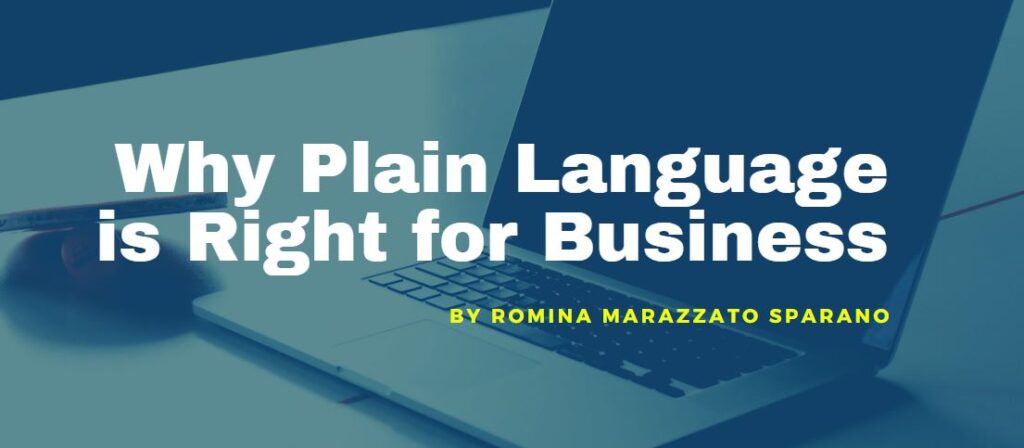I was asked this question by a group of non-fiction writers. The bottom line: all content developers, even marketers and advertisers, can learn a huge deal from plain language practice and instill accuracy and truthfulness in their copy.
As a plain language expert helping content providers improve their communication by using reader-centered techniques (both for expert and lay readers) I am often asked, how do you know it works?
Here are a few journeys from convoluted to plain language that have a proven record of success!
1) Simplified EULAs and TOCs
An End-User License Agreement is a contract to give the user the right to use a software application in some way. The Terms of Service are set of rules a provider attaches to a software service or web product. Most users agree to these before using the service or product without even reading them and can fall prey to them. Buried in the legalese are terms like “do not criticize the product publicly” or “using this service means you will be monitored”—some of which have been upheld in court.
The drive to protect consumer privacy and provide accessible, understandable, and actionable content, has led some organizations to use plain language to create simplified EULAs and TOCs.
This is a before and after example from 500pix, a photo-sharing platform, that shares the legalese and the boiled-down version of their TOC. Just in case, they’re quick to point out that “The column on the right provides a short explanation of the terms of use and is not legally binding.” But, when there has been disputes about user conduct, that right column is an easy reference to ground the discussion and sort behaviors that may be grounds for suspension or termination of an account, or other steps.

2) A Letter from the US Department of Veterans Affairs
This project was undertaken by the VA regional offices in Jackson, Mississippi, and Little Rock, Arkansas years ago, but it continues to have results today. It involved redrafting a latter sent out to veterans who were seeking benefits.
The before version of the letter was revised using veterans input and the results of the change were measured. Results for the old letter were estimated as a composite of each counselor working with this letter, at 750 letters sent out and some 1,150 calls received. The new letter was sent out 710 times and only 192 calls were received, asking for clarifications or help in complying with the requirements. The estimated savings for this single letter used nationwide amounted to more than $40,000 a year. And remember that the VA sends out thousands of letters.

3) A Promissory Note at Citi Bank
An effort that is still under development: redrafting of financial documents for clarity. At one point, Citi Bank shocked the financial sector by redrafting a promissory note and reducing it from 3000 to 600 words.
In the process, senior management discovered to what extent the dense legalese hid a slew of sneaky provisions that deceitfully tipped the scale in favor of the bank’s. Among the worst practice were “confessions of judgment” which allowed the bank to garnish a delinquent borrower’s salary without even going to court to prove a breach of contract and a provision that prevented the opposite (the bank paying the borrowers legal fees if they won).
The choice, according Duncan MacDonald, a lawyer at Citi at the time, was to either “get rid of the bad stuff or expose it in plain language for the world to see” They did both, by the way, prompted by former Miss America Bess Myerson, who had become an icon of consumer advocacy! Here’s an excerpt of the before and after. The result of this single note was increased payment compliance, competitive advantages and lost opportunities lawsuits, less collection problems and lawsuits. Exactly the opposite of what had been predicted by most of the bank’s lawyers.
This gave plain language momentum, but perhaps not enough: If this had stuck, plain language across the board could have, as a strategy, prevented the amalgam of eerie instruments that led to the Great Recession!

4) Extra: I’m a technical writer and translator, so, I’ll share this one two: Technical writers at General Electric Information Services write the manuals for the company’s software. The company redrafted some in plain language and compared calls for support: The new version resulted in 125 less calls per month than the old version. After calculating the cost of the calls, the company concluded that it saves up to $375,000 a year when customers use the new version.
The Bottom Line
People want to understand your product or service, they are tired of gimmicks. Avoid fallacies that mesmerize at first but quickly smell like rotten eggs: For instance,
-The “appeal to authority,” the fallacy that something is good because a person of authority or status does or uses it.
-The “just in case” fallacy that presents a worst-case scenario rather than the most probable one.
-The “bandwagon fallacy” that implies that if everyone is doing it, you should too. Your products and services are better than that.
Use the principles of plain language in your writing: relevance, clarity, adequacy, accessibility, actionability, and accuracy. If you provide your users with accurate and actionable content, they will become your biggest fans!





